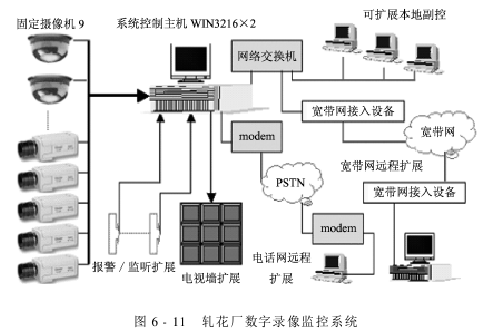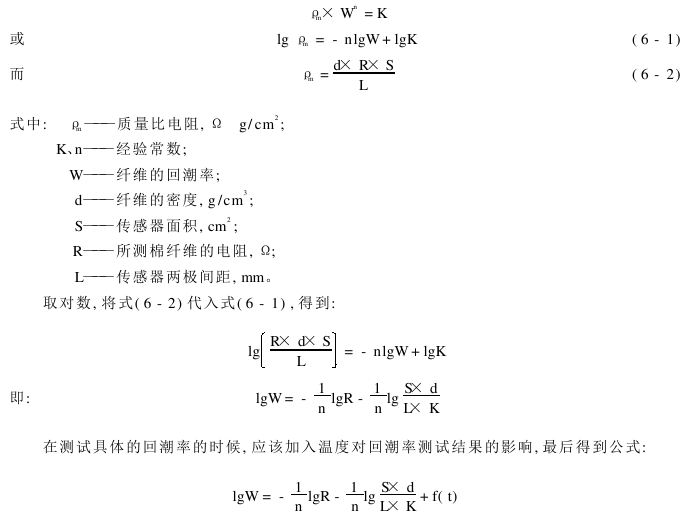Cotton processing information management Computer management system for cotton processing
The computer management system for cotton finishing mainly consists of two parts: the process monitoring system and the cotton finishing automatic control system.
(1) Ginning process monitoring system
Characteristics of the monitoring system adopted by the ginning factory:
(1) The master control user can manage multiple signals at the same time; one channel or one channel can be viewed at the same time through the screen splitter Multiplex screen.
(2) By operating the keyboard, many variable lenses can be manipulated to stretch, focus and other actions to achieve close-up and panoramic viewing of the monitored objects.
(3) By operating the keyboard, the machine can be controlled horizontally and tilted to facilitate finding the object you want to view.
(4) Historical images can be saved using hard disk recording.
(5) The image quality reaches TV level or VCD effect.
The digital video surveillance system of the cotton ginning factory is shown in Figure 6-11.

(2) Cotton finishing automatic control system
The cotton finishing automatic control system currently mainly includes online control of sub-cotton drying, online control of lint humidification and online testing device for cotton bale moisture regain.
Online manipulation of cotton drying and lint humidification uses an infrared moisture tester to detect the moisture content of cotton online. The detection results are transmitted to the console in the control room. The automation equipment on the console automatically adjusts the drying of cotton based on the moisture content. Machine or lint humidifier can keep the moisture content of lint at 7% to 8% (can be adjusted based on experience). At the same time, the console can also issue instructions to control the speed of the gin to achieve the best finishing effect.
The cotton bale moisture regain online test device is an intelligent product specially developed to adapt to the reform requirements of the cotton quality inspection system and to automatically detect the moisture regain of cotton bales online for cotton finishing plants. It can be used with barcode systems, IC card code single systems, and drying systems. Integrate dry systems. The test device is designed based on the relationship between cotton moisture regain and its resistance. There are two types of sensing heads: ring type and pin type, but their design principles and circuit structures are exactly the same, and the software processes are slightly different.
(3) Design principles of online moisture testing and control devices
The more mature technology for online testing of cotton and lint moisture and online testing devices for moisture regain of cotton bales is infrared moisture measurement technology. The design principles and circuit structures of the two are exactly the same, but the software processes are slightly different.
1. Electrical conductivity of cotton fiber
The electrical conductivity of fiber is generally expressed by mass specific resistance ρ m. When the relative air humidity is 30% to 90%, the mass specific resistance ρm and the moisture regain W have the following approximate relationship:

Where: t——temperature, ℃.
2. The effect of temperature on the conductive properties of cotton fiber
The resistance of water-containing cotton fiber decreases as the temperature increases, where the rate of change of lgρ to temperature varies with the moisture regain rate and temperature. The moisture regain of cotton fiber The greater the moisture regain rate of cotton fiber, the greater the influence of temperature on it. The lower the moisture regain rate of cotton fiber, the smaller the influence of temperature on it.
Years of experience show that the moisture regain is above 7%. Taking 20℃ as the benchmark, for every 1℃ increase in cotton fiber temperature t, the moisture regain is corrected by -0.1%, and for every 1℃ decrease in cotton fiber temperature, the moisture regain is corrected by +0.1 %, correction value C=0.1×(20-t)
Where: C————Cotton fiber moisture regain correction coefficient;
t——Temperature, ℃.
When the moisture regain is below 7%, in an environment lower than 20°C, temperature compensation shall be carried out according to the moisture regain temperature compensation table. In an environment higher than 20°C, the temperature compensation shall still be carried out according to the above formula.
3. Testing principle
Each molecular bond can absorb the energy of a certain fixed wavelength of near-infrared rays. For example, O—H bonds in water molecules, C—H bonds in oils and organic matter, N—H bonds in proteins, etc. The extent to which an object absorbs the near-infrared energy of a certain fixed wavelength reflects the proportion of the corresponding component in the object. The probe continuously emits a series of complete beams through the infrared filter. Some of the complete beams are absorbed by the test object, and the remaining complete beams that are not absorbed are reflected. These reflected infrared rays can be focused on the detector. The electronic components in the probe form a value from the complete beam collected by the detector, which indicates the proportion of a certain component.
In short, first measure the moisture regain of cotton bales, and then make temperature corrections to get the final correct moisture regain.
4. Technical requirements
(1) Measuring range: The reading measured by the device is the moisture regain of the cotton bale. The measuring range is 4% to 7% in the middle layer and 7% to 13% in the lower layer.
(2) DC working voltage: 90V±2V for the middle layer test circuit and 45V±2V for the lower layer test circuit.
(3) Cotton bale density: Cotton bale density should comply with the requirements of GB/T19820-2005 standard.
(4) Measurement accuracy: Use calibration resistor to verify, the accuracy should meet the following requirements:

(5)Temperature test range:-30~40℃.
AAAEHRYJUTUTHYER





